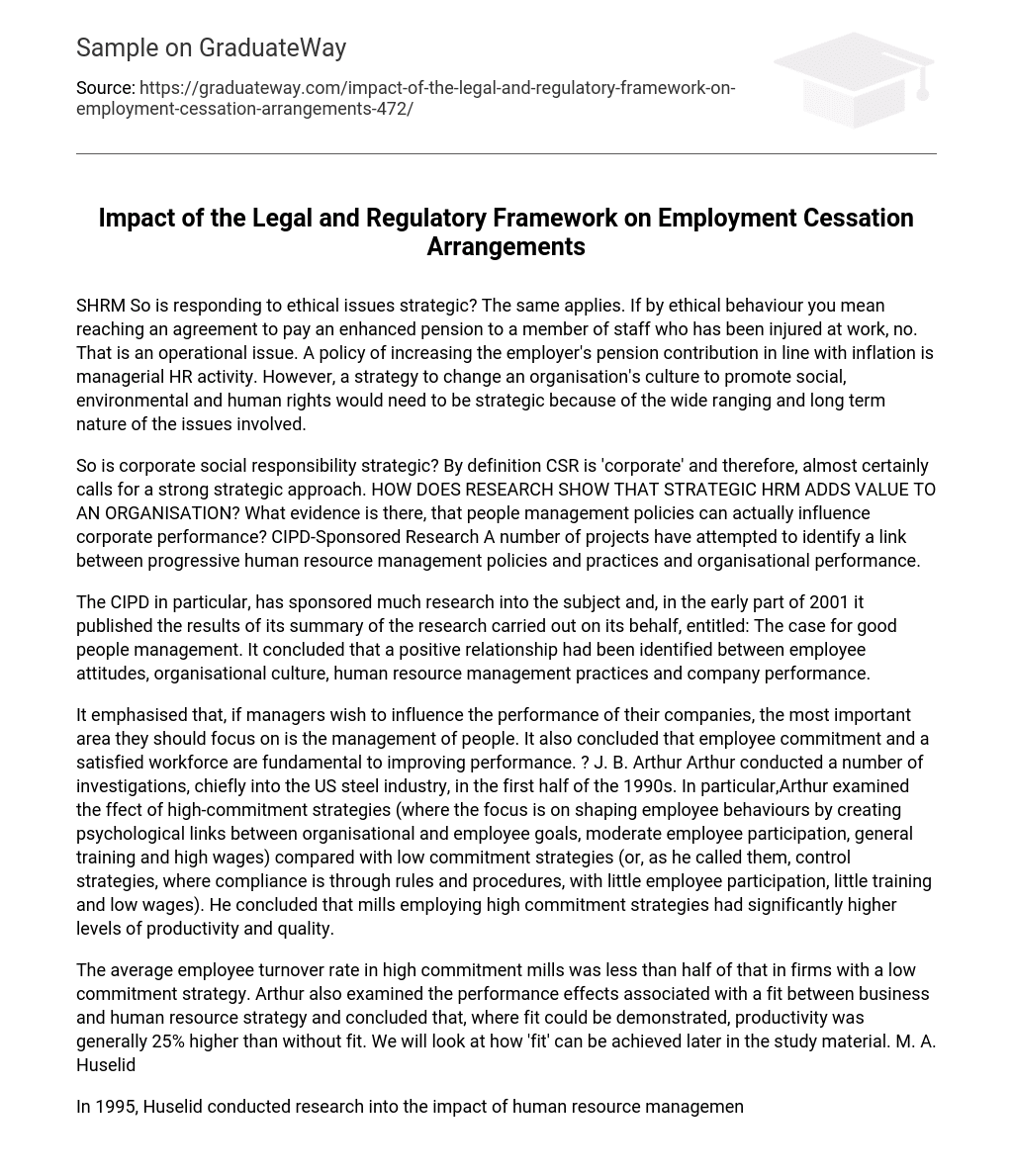SHRM So is responding to ethical issues strategic? The same applies. If by ethical behaviour you mean reaching an agreement to pay an enhanced pension to a member of staff who has been injured at work, no. That is an operational issue. A policy of increasing the employer’s pension contribution in line with inflation is managerial HR activity. However, a strategy to change an organisation’s culture to promote social, environmental and human rights would need to be strategic because of the wide ranging and long term nature of the issues involved.
So is corporate social responsibility strategic? By definition CSR is ‘corporate’ and therefore, almost certainly calls for a strong strategic approach. HOW DOES RESEARCH SHOW THAT STRATEGIC HRM ADDS VALUE TO AN ORGANISATION? What evidence is there, that people management policies can actually influence corporate performance? CIPD-Sponsored Research A number of projects have attempted to identify a link between progressive human resource management policies and practices and organisational performance.
The CIPD in particular, has sponsored much research into the subject and, in the early part of 2001 it published the results of its summary of the research carried out on its behalf, entitled: The case for good people management. It concluded that a positive relationship had been identified between employee attitudes, organisational culture, human resource management practices and company performance.
It emphasised that, if managers wish to influence the performance of their companies, the most important area they should focus on is the management of people. It also concluded that employee commitment and a satisfied workforce are fundamental to improving performance. ? J. B. Arthur Arthur conducted a number of investigations, chiefly into the US steel industry, in the first half of the 1990s. In particular,Arthur examined the ffect of high-commitment strategies (where the focus is on shaping employee behaviours by creating psychological links between organisational and employee goals, moderate employee participation, general training and high wages) compared with low commitment strategies (or, as he called them, control strategies, where compliance is through rules and procedures, with little employee participation, little training and low wages). He concluded that mills employing high commitment strategies had significantly higher levels of productivity and quality.
The average employee turnover rate in high commitment mills was less than half of that in firms with a low commitment strategy. Arthur also examined the performance effects associated with a fit between business and human resource strategy and concluded that, where fit could be demonstrated, productivity was generally 25% higher than without fit. We will look at how ‘fit’ can be achieved later in the study material. M. A. Huselid
In 1995, Huselid conducted research into the impact of human resource management practices on company performance and found that, if firms increased their high performance work practices, the result was significant reductions in employee turnover and significant increases in productivity and profits. In a further study in 1997, he focused on the strategic impact on shareholder value of high performance work systems and found that firms that adopted high performance work systems had significantly higher levels of performance than those which did not, although the research did not identify precisely how such a system creates that value.
Later in this study text we’ll look at ways of evaluating the effectiveness of human resource strategies and some of the pitfalls of doing so. But at this point, think about your own organisation and the strategies employed. How might the strategies help or hinder organisational performance? What evidence do you have of your findings?





